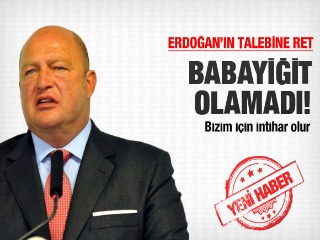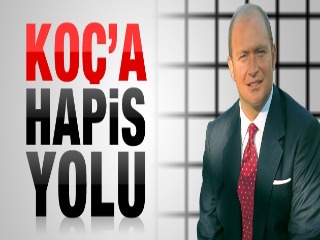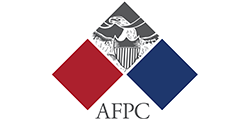BACKGROUND: On June 15, 2013, Prime Minister Recep Tayyip Erdogan lost his patience. He had given demonstrators 24 hours to leave the Gezi Park, next to Taksim square, where environmental activists had staged a sit-in for several weeks; the park had been stormed by police two weeks earlier, setting off the protests that had since rocked Istanbul as well as other parts of Turkey. The sit-in had resumed when the police retreated from the Taksim-Gezi Park area, and the Governor of Istanbul had even promised that demonstrators would be safe; but Erdogan was apparently of another opinion.. At 8 PM, June 15, without any noticeable provocation, the police started firing tear gas into the peaceful crowd, and advancing to clear the park, forcing hundreds of people to flee. At this point, the Divan hotel, facing Gezi Park, opened its doors to the fleeing crowd, and the hotel briefly became a makeshift place of refuge where people received medical care. Briefly, that is, because the police later that night charged the hotel. When it fired tear gas straight into the hotel lobby, people fled downstairs to the ballroom. For hours, the police prevented ambulances from collecting people from the hotel.
Divan hotel’s decision not to turn away protesters was apparently made by the hotel management, but supported by its owners, Koç Holding, Turkey’s largest industrial group. On October 8, citing its actions during the Taksim protests, the German organization PKF Hotelexperts awarded Divan hotel its “Hospitality Innovation Award” for displaying “civil solidarity, courage and hospitality in crisis situations.”
The Turkish government begs to differ: in the past three months, it has deployed its wrath in an unprecedented manner against the owners of the hotel, the Koç group , whose business include everything from oil refineries to joint ventures with Fiat and Ford producing cars, and which is responsible for close to a tenth of Turkey’s Gross Domestic Product.
On June 17, Erdogan accused “hotel owners” of sheltering “terrorists”; on June 25, speaking to his parliamentary group, Erdogan stated that far from helping peaceful protesters fleeing police violence, the Divan hotel welcomed “criminals” that had fought with the police. “You know there is a law against harboring criminals. This in fact amounted to the crime of harboring [criminals]”. Soon enough, pro-government media had begun a campaign against Divan and the Koç Group. Not only was the Koc-owned hotel accused of harboring criminals: it was now said to be complicit in violence against the police. Among other, pictures were published – including on Turkish state television, (TRT) which has come to reflect official views to an unprecedented degree – of people producing Molotov cocktails in hotel rooms, suggesting Divan and the Koç Group had “given the protesters all they wanted.” The only catch was that the pictures were apparently not taken in the Divan hotel at all.
Then, on July 24, auditors of the Finance Ministry conducted surprise raids at several of the Koç Group’s major assets in the energy industry, including Turkey’s single largest company, the Tüpraş oil refinery near Istanbul. Inspectors were said to be looking for evidence of smuggled petroleum being refined, and for tax violations. Other assets under investigation included the Aygaz and Opet companies, also in the oil and gas sector.
By September, the government’s pressure on the Koç group escalated to a witch hunt. On September 12, Erdogan spoke at a business conference , and rhetorically asked “did not financial circles and some media contribute to February 28? I really wonder why they are not standing trial”. Indeed, the very next day, a criminal complaint was filed against the Koç Group and several other business entities for allegedly supporting the “postmodern” military intervention of February 28, 1997, which brought down an Islamist-led government that preceded the AKP. On September 27, the government canceled a tender to build several warships for the Turkish navy that had originally been won by RMK Marine, a Koç Group enterprise. And by September 30, a long-standing land dispute between the state and the Istanbul-based Koç University heated up again, with the state threatening the University’s eviction from its campus over disputed rent payments.
By this time, the magnitude of the investigation launched against the Koç Group’s energy companies became apparent. Turkish media reported that over 200 inspectors had been assigned to examine the records of Tüpraş. Aygaz and Opet. By comparison, 35 inspectors were assigned to investigate the Uzan holding in 2004, when it was accused of withholding eight million dollars in taxes. And when the government slammed the Dogan Media Group with a tax evasion fine of $2.5 billion in 2009, only 20 inspectors had been assigned to that case. Visitors to the Tüpraş refinery in Kırıkkale report that inspectors have literally been camping at the facility since late July.

IMPLICATIONS: The AKP government, unsurprisingly, argues that these inspections and cancellations are a matter of routine, and that they have no political basis. Similarly, the Koç Group is tight-lipped about the issue. Whenever representatives have been asked, they have either refused to comment, or have downplayed the events. But the notion that these events are coincidental does not hold up to scrutiny. The AKP Government’s assault on the Koç group is unprecedented only in size; the practice of using tax evasion charges and exclusion from government tenders against disloyal companies is not new. Indeed, it has been a hallmark of the AKP Government since the beginning. Already in 2004, the government moved against what was then its main rising rival, the Genç Party of controversial business tycoon Cem Uzan. Using the Savings Deposits Insurance Fund (SDIF), the government seized over 200 assets of the Uzan conglomerate, including newspapers, a television station, and hydropower stations. Given the Uzan group’s reputation as unsavory capitalists – and multiple lawsuits by Western firms, including Motorola – the government’s move against Uzan escaped criticism. Yet it remains a fact that the government targeted Uzan only months after Erdogan, in reference to the upcoming local elections, had told the AKP’s regional leaders that that “our only rival is the Genç Party”.
In 2007, again using the SDIF, the government took control over the second largest media holding in the country, and in a single-bidder auction handed it over to the Çalık group, run by Erdogan’s son-in-law. Not coincidentally, this took place shortly after the holding, Sabah/ATV, had grown more critical of the government following the 2007 controversy over the presidential election. (See June 4, 2008, Turkey Analyst) In 2009, the government moved against the country’s largest media holding, the Dogan media group owned by business tycoon Aydın Doğan. This time, the government imposed a US$2.5 billion fine on DMG, which was later reduced once the group divested several of its key assets, such as the Milliyet newspaper – which promptly changed its editorial policy to a more pro-government line under new owners. Other examples of politically motivated persecution of business and media entities abound; while there is as yet no example of the government applying similar measures to business and media entities loyal to its policies.
Against this background, the government’s assault on the Koç group unquestionably amounts to the selective application of justice for political purposes. But for several reasons, the attack on Koç represents an escalation of the government’s authoritarian tendencies.
First, several of the government’s moves against the Koç Group followed literally within hours of the Prime Minister’s direct threats against the group. This suggests two things: first, that the government no longer bothers to avoid the perception of selective application of justice. Second, that the assault on Koç serves the very purpose of political intimidation: Erdogan is sending the message that no one will get away with disloyalty to him and his government, not even the country’s largest business conglomerate.
Both the Uzan and Doğan cases targeted business figures that had been involved in controversy, and accused either of corruption or of aggressively using their media outlets to further their business interests. But by targeting Koç, the government is not only going after the country’s largest business group, but also the most respected.
Tellingly, Erdogan’s witch hunt even generated controversy within the Islamic conservative movement. On July 27, the Chairman of the Kayseri Chamber of Industry, Mustafa Boydak, came to Koç’s defense. (See August 30, 2013 Turkey Analyst) Boydak, who personifies the pious business elites of central Turkey, stated that “we should protect the corporations that carry Turkey like our own eyes,” urging the government not to repeat the mistakes of 1997, when military-supported government institutions exerted pressure against the pious business elites. And in his yearly address to parliament on October 1, President Abdullah Gül subtly but unmistakably made his dissent clear: “we constantly have to protect the environment that makes both foreign investors and domestic entrepreneurs feel secure and at ease.”

CONCLUSIONS: The government’s assault on the Koç group is consequential enough to merit a reaction by the U.S. and European governments. First, they are a further step in the dangerously authoritarian slide of Erdogan’s government, and testify to its intention of squashing dissent in Turkey. The fact that they were triggered by a humanitarian action to help fleeing civilians makes it all the more repulsive; but they also put the lie to the notion that the government is returning to a more democratic agenda with the recently launched (and largely cosmetic) democratization package.
Secondly, the assault on Koç could prove dangerous to Turkey’s economy. The Doğan case was widely seen as damaging for Turkey’s international reputation; if the government actually moves ahead to silence or damage the Koç Group through punitive measures, international investors are certain to notice. And that would take place at a particularly critical moment for Turkey. On the one hand, like many large emerging economies, the Turkish economy’s growth is largely kept up by low interest rates. The anticipation of the Federal Reserve ‘tapering’ its quantitative easing program rattled the Turkish market; on October 6, the IMF released a report bluntly rebuking Turkey for failing to reduce spending and address its ballooning trade deficit. On the other, markets are already concerned with the political instability following the Taksim protests and the government’s repressive response – and not least, Erdogan’s decision to blame an imaginary ‘interest rate lobby’ for the unrest.
In this context, Turkey’s economic stability is already in question, and the country has done worse than other emerging economies over the summer. A large scandal over the Koç group could very well be the straw that breaks the camel’s back. Western policy-makers would be well-advised to use their influence to rein in Erdogan and his tax inspectors before the damage becomes irreversible. But given Erdogan’s tendencies lately, private and cautious messages are unlikely to make a difference; they would only be effective in combination with clear public statements of concern.
Svante E. Cornell is Director of the Central Asia-Caucasus Institute & Silk Road Studies Program Joint Center, and Publisher of the Turkey Analyst.



